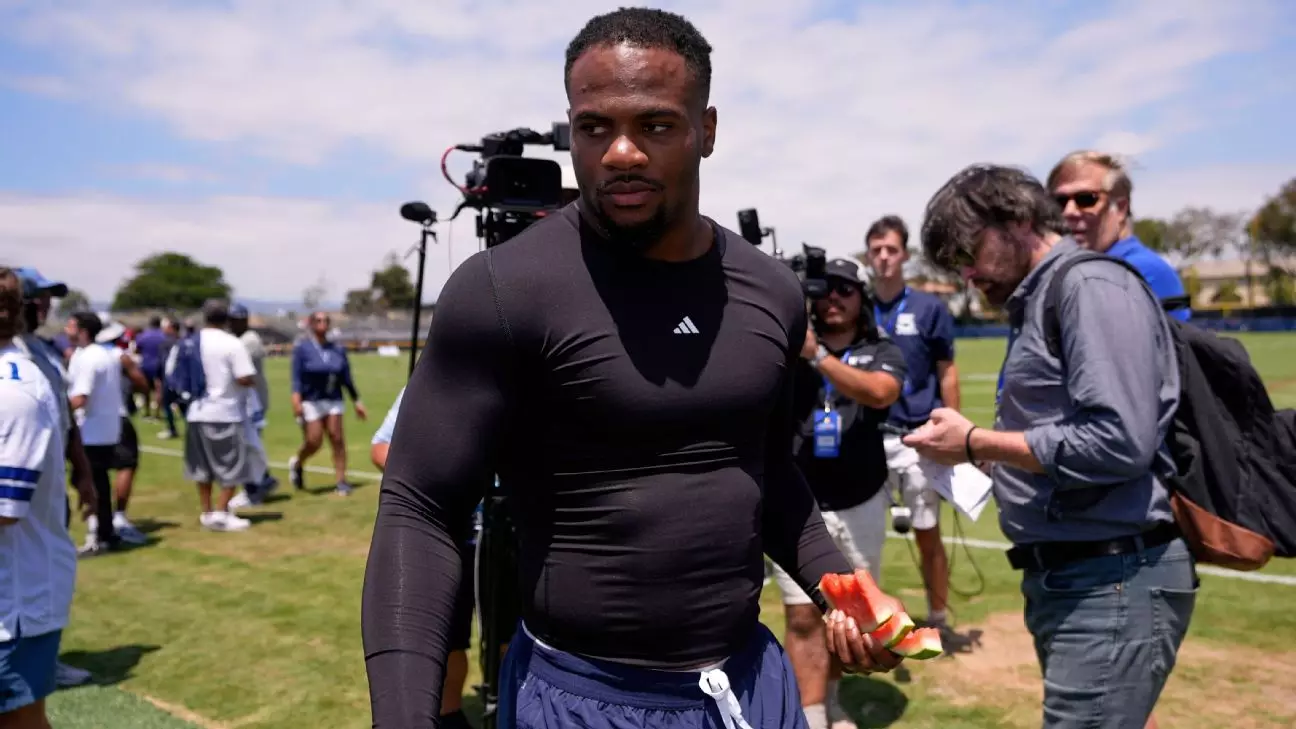In professional sports, particularly in the NFL, the fine line between confidence and complacency can have disastrous repercussions. When coaches and management publicly express unwavering certainty about a player’s availability—despite evidence to the contrary—it suggests a perilous underestimation of the risks involved. The Dallas Cowboys’ recent stance on Micah Parsons exemplifies this dangerous mindset. Coach Brian Schottenheimer’s unwavering assurance that Parsons will be ready for the season opener, despite the absence of on-field practice and ongoing contract negotiations, reflects a troubling optimism that can undermine team stability.
This kind of optimism, while seemingly inspiring, often masks deeper issues that could compromise team performance. Relying on a player’s self-awareness and recovery instincts, especially when they are dealing with injuries and contract uncertainties, can lead to disastrous outcomes. Sports professionals should prioritize factual assessments over hopeful projections—failure to do so risks costly injuries, poor team cohesion, and a compromised season. The Cowboys’ overconfidence in Parsons’ readiness exemplifies a broader tendency in the league to dismiss the nuance of player health and contractual stability in favor of short-term optimism.
The False Promise of Contractual Assurances
The unresolved contract negotiations between Parsons, his agent, and the Cowboys reveal another layer of vulnerability. Pre-season assurances that a player will be prepared for the season can be misleading, especially when negotiations stall or remain incomplete. The fact that Parsons has yet to engage in full practice, despite the team’s expressed confidence, indicates a disconnect between the narrative and reality. Leaving a key player in a limbo state—neither fully committed nor fully healthy—poses significant risks to team chemistry and performance.
Moreover, the assumption that Parsons’ physical readiness is guaranteed due to his discipline and body awareness is overly simplistic. Injuries like back tightness and soft tissue issues are unpredictable, especially when players are not practicing full contact or movement-intensive drills. These injuries don’t just threaten a player’s participation but can also lead to long-term setbacks. Relying solely on the player’s subjective assessment of their health ignores the crucial role that comprehensive medical evaluation and cautious decision-making play in safeguarding a team’s future.
The Cost of Overconfidence in Player Health Management
Sports teams often invest heavily not just in talent but in medical and training staff to prevent injuries and optimize performance. However, overconfidence in these measures—especially when downplaying injury risks—can lead to fragile rosters susceptible to setbacks. The Cowboys’ stance underscores a dangerous misconception that injury management is purely a matter of individual discipline and recovery routines.
In high-stakes seasons, especially with a player as pivotal as Parsons, teams should adopt a risk-averse approach. It’s insufficient to assume readiness based on minimal participation or personal health management. Proper medical clearance, adequate practice repetitions, and ensuring players are primed physically and mentally are non-negotiable, particularly against a formidable opponent like the Philadelphia Eagles. Ignoring these factors and blindly counting on injury symptoms resolving naturally, as the Cowboys seem to do, can turn promising seasons into tragedies with a single misstep.
The Hidden Cost to Team Dynamics and Future Planning
The broader implications of placing too much faith in unproven projections extend beyond immediate health concerns. The uncertainty surrounding Parsons’ status affects roster decisions, game strategy, and leadership dynamics within the team. For instance, if Parsons isn’t fully ready or gets injured early in the season, the Cowboys may be forced into uncomfortable roster decisions—potentially keeping an extra pass rusher or adjusting their game plan on the fly.
More critically, prioritizing short-term optimism over thorough vetting can erode trust within the team. Players and staff look to leadership for honest assessments and transparent communication. When optimism masks uncertainty, it results in disillusionment, strained morale, and misaligned expectations. This dynamic risks undermining the cohesive effort necessary for a successful season. Teams that ignore these soft signals of trouble often wake up too late, lamenting missed opportunities for better preparation and contingency planning.
In sports, as in life, true strength lies in acknowledging vulnerabilities rather than glossing over them. The NFL’s relentless pursuit of victory must be tempered with a realistic appraisal of player health, contractual stability, and readiness. Overconfidence, no matter how well-intentioned, often blinds teams to impending crises that can be devastating—turning promising campaigns into cautionary tales of hubris and neglect.


Leave a Reply